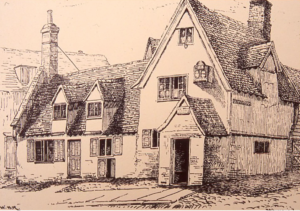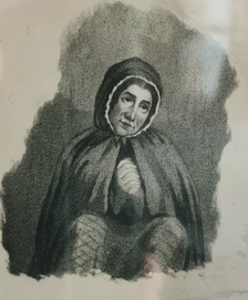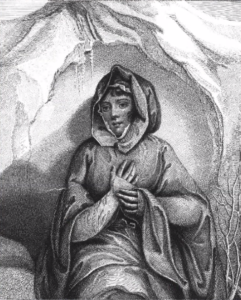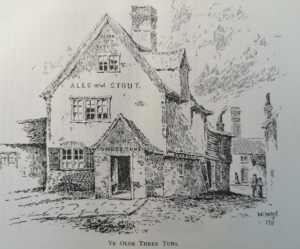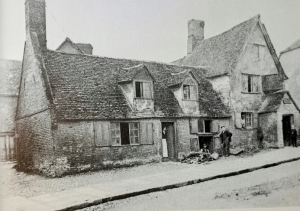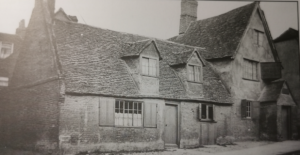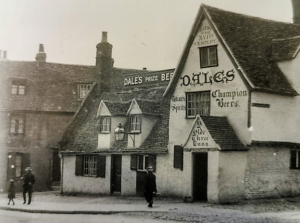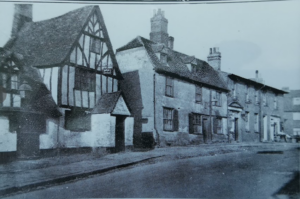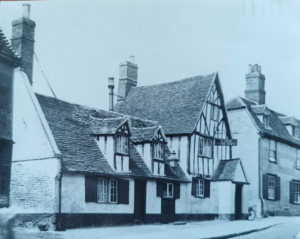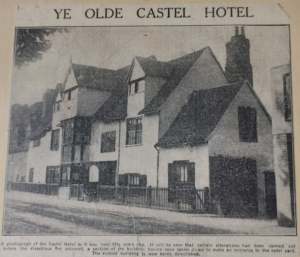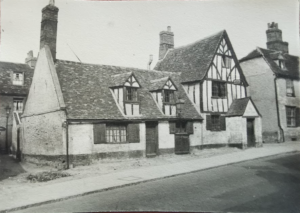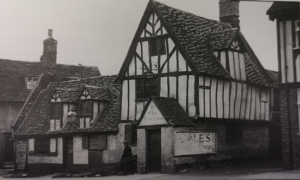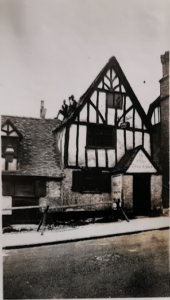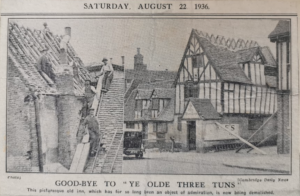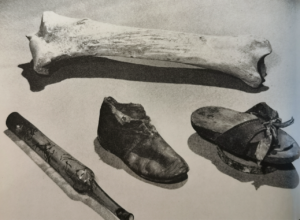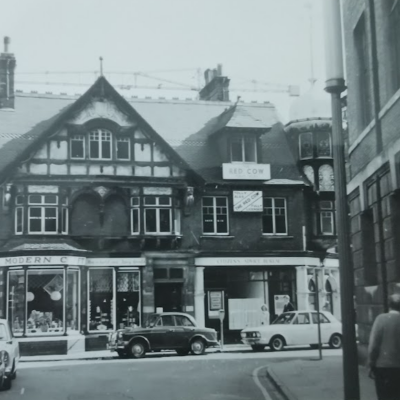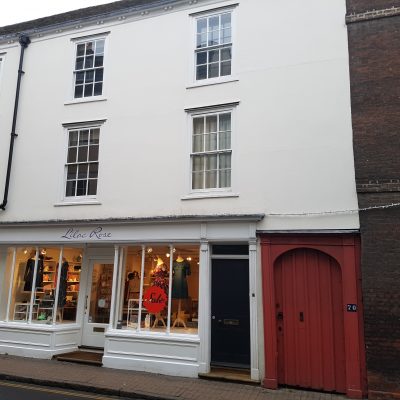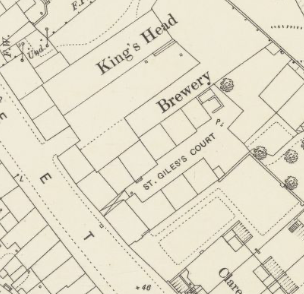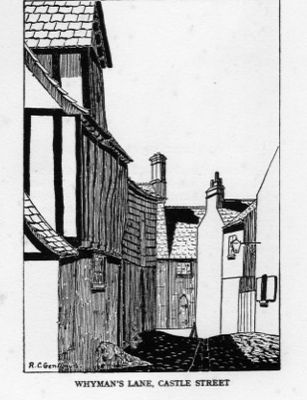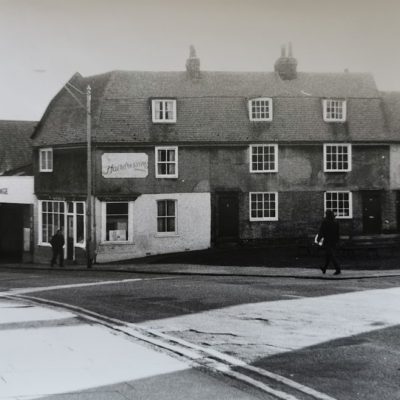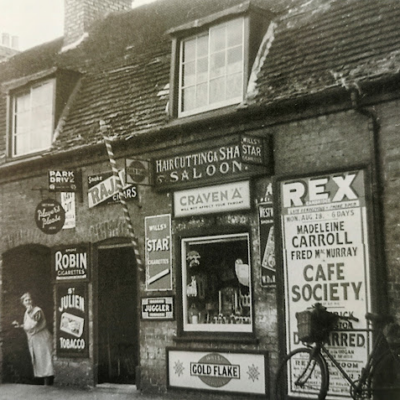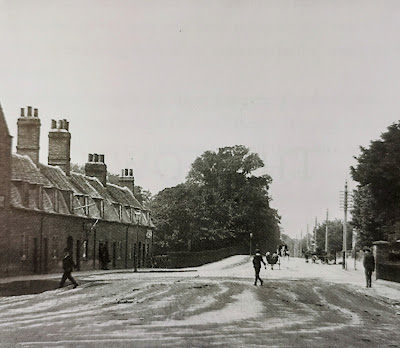Search by topic
- archaeology
- architecture
- bricklayer
- Building of Local Interest
- carpenter
- church
- crime
- dressmaker
- fire
- Great Eastern Railway
- listed building
- medieval
- oral history
- Public House
- Rattee & Kett
- Religious House
- Roman
- scholar
- school
- Then and Now
- tudor
- women
- work
- world war one
- world war two
Search by text
 Three Tuns, Castle Street c.1933
Three Tuns, Castle Street c.193341 (77) Castle Street, The Three Tuns, Whyman’s Inn
History of 41 Castle Street
1664/5
Alderman Newton records in his diary for January 15th the funeral of Susannah Wells, wife of Alderman Wells, who kept the Three Tuns Inn:
There was a great funerall but little solemnity, many people but small order, the Colledges served in their Colledge Halls, and the rest of the Towne at the 3 Tunns and some other houses neere. She was born by Mr of Arts, no gloues not ribbons, seruice one cup of claret, one cup of Ipocras. …. sugar cakes, 2 roles and the best sort onely 2 mackeroons.
Vanishing Cambridge by Mike Petty notes: In 1907 members of the Antiquarian Society were told: It was probably built about Christmas 1685 when it was leased to William Sell and known as the Three Tuns for the first time in 1754. … They saw a letter of 1739 said to be from the landlord re his [Dick Turpin’s] effects.
1799 3rd Feb. In Victorian Cambridge by Enid Porter, there is the tale of Elizabeth Woodcock of 83 Station Road, Impington. She had come on horseback from Impington to do her weekly shopping in Cambridge. She stopped at the Three Tuns on her way home in the late afternoon for a gin. When she left the inn it was snowing hard. She managed to ride within half a mile of her cottage but then her horse bolted.
She took shelter under a hedge and the snow piled up around her in a drift forming a sort of cave. She wasn’t rescued until 10th February despite search parties. She experienced severe frostbite to her hands and feet and died the following July.
Cambridge Intelligencer 16th Feb. 1799:
However extraordinary the following account may appear, our readers may depend on the truth of it, as the principal circumstances were taken from the information of the poor sufferer, attested by the most respectable persons.
On Sunday last, about half past one o’clock, as Mr Muncey of Impington was coming to Cambridge, he observed a handkerchief upon a snow drift, and on approaching the spot, heard the sound of a human voice upon which he called a shepherd who was then in the field, and they found that the person under the snow was Elizabeth Woodcock, who had been missing since Saturday evening the 2d instant, as mentioned in our last paper.
The shepherd, whose name is Stittle, on coming to the spot, called out “Mrs Woodcock!” and was immediately answered, “John Stittle! I know your voice: for God’s sake help me out.” Muncey then ran for her husband, who came with assistance, and after considerable labour extricated the poor woman from her miserable situation, and conveyed her in a cart to her husband’s house at Impington, where she was immediately put to bed, and proper care taken of her by Mr Oakes, surgeon of this town, who fortunately passed her as she was conveying home in the cart, and who, we hope, will favour the public with an account of all the the peculiarities attending this interesting case.
On enquiring into the circumstances of her being lost, the said, that as she was returning from market, between seven and eight o’clock on Saturday evening, about half a mile on this side Impington, her horse started, and threw her off, together with her basket in which were some meat, candles and other articles which she had bought at Cambridge; that the horse ran from her, and that she wandered with her basket a considerable distance from the road, till she was almost exhausted, having lost one of her shoes in the snow, when she sat down under a bush in expectation of the snow abating. Being very much fatigues, it is conjectured that she fell asleep, and the wind being high, the snow drifted over her to the height of several feet, and there she remained eight nights, without any sustenance except what she received from eating the snow. She says that she heard the bells ringing for church at Impington, Hilton and Chesterton, (three neighbouring villages), on Sunday the 3rd instant – that she frequently heard people passing near her. She had beat down the snow as far as her had could reach, which formed a space for her more easily breathing; and she says it was so light as to enable her frequently to read in an Almanac which she had with her. her basket, with the meal, &c. was not more than two yards from her, but her legs being buried in the snow were so benumbed, that she was unable to make any efforts to get to it, or even to extricate herself until she perceived the snow waste on Saturday last, when she slipt off a branch from the bush under which she had taken shelter, and finding she could thrust it through the snow above her, fortunately thought of tying her handkerchief to the top of the branch, by which means she was providentially discovered as above mentioned. It is natural to suppose that she must have slept a considerable part of the time, (though she appears to have kept a regular account of the days and night,)otherwise it seems impossible for her to have existed in so dreadful a situation for nearly eight days and nights.
Mrs Woodcock is the wife of a small farmer at Impington, four miles from Cambridge, in such circumstances as to render the contributions of the benevolent acceptable. She is about 45 years of age, and has five children, to one of whom, upwards of two years old, she gave suck at the time the accident happened.When first taken out o the snow, her voice and pulse were as strong as in full health! her legs appeared like those of a drowned person, and a mortification has taken place in consequence of their being buried in the snow for such a length of time.
Cambridge Intelligencer 23rd Feb. 1799:
Elizabeth Woodcock, whose surprising preservation in the snow we mentioned last week, continues very ill, though with some hopes of her recovery.
This day is published by J Baldrey drawing master and engraver, price one shilling, a portrait of Elizabeth Woodcock of the parish of Impington, near Cambridge, who was buried under a vast drift of snow, on her way home from Cambridge, on Saturday evening, February 2, and lay there without sustenance until Sunday noon, February 10; when she was found alive and sensible. Taken as she lay in bed on February 12, by Mr. John Marshall, surgeon, Cambridge: with a full, true and clear account of this unparalleled circumstance, which is also published, price 2d for the Benefit of the poor Sufferer and her Family.
See following entries:
Elizabeth Woodcock, Histon home
Elizabeth Woodcock additional papers
A stone was set up to commemorate the place where she had been imprisoned by the snow but this became so defaced that a second stone was erected in a field. It was this stone which Josiah Chater referred to when he was invited by the Barrett family to join them at a party in Impington on 15th June 1849.
In the process of moving the location of this second stone at the end of the 19th century, the original stone memorial was discovered. This was given to the Cambridge Folk Museum in 1937.
For modern memorial stone see link
See also Enid Porter, Cambridgeshire Customs and Folklore p199f.
According to A B Gray in Cambridge Revisited this was where the highwayman Dick Turpin was reputed to stay when he visited Cambridge, occupying a room at the back of the house.
Cambridge Independent Press 6.12.1907
Leaving the old barn and the memories its story revives, we came to the Three Tuns, the curious old publichouse on Castle-hill, opposite to the gates of the Shire Hall, which inevitably attracts the attention of visitors. The house has recently passed into the possession of the Cambridge Corporation. From this inn Elizabeth Woodcock started on her return to Impington, when she was overwhelmed in a snowstorm. It was used by Pepys when he came from London to Cambridge in 1659-60, and the fact was duly recorded in the famous diary. But what is not so well known, and may be more to the popular fancy, is the fact that it was one of the houses of call of that notorious character Dick Turpin, who, we are told, used to sleep in a room at the top of building at the back of the Inn, which has just been destroyed in the course of some alterations and improvements that are being carried out. In outward appearance the old Inn remains unaltered, and there are many quaint nooks and corners and curious staircases, which tell their own story of other days and other habits. There is another old public house in the town which is said to have been used by Dick Turpin, the Old Red Lion in Bridge-street, which possesses a fine old carved mantel. Among other old places visited may be mentioned the Old Cross Keys Inn yard in Bridge-street, now occupied by Messrs. Bird as a vinegar brewery, and the old “White Horse” Inn, at the foot of Castle Hill, which has in the chimney of the sitting room a space it is thought was used as a hiding hole.
1830 John Whyman (Pigot’s)
1839 John Whyman (Pigot’s)
1851 Thomas Whyman (Gardner’s)
1852 Thomas Whyman (Slaters)
1869 Thomas Whyman (Post Office)
Whilst Whyman was licensee the pub got the name Whyman’s Inn.
1871
Thomas Whyman, victualler milkman, 64, b Cambridge
Elizabeth Whyman, 59, b Cambridge
Alice Whyman, grand daughter, 9, b Cambridge
Elizabeth Whyman, grand daughter, 6, b Cambridge
1878 John Whyman (Spalding’s)
1879 John Whyman (Kellys)
1881 John Whyman (Spalding’s)
1883 John Whyman (Kellys)
1888 John Whyman (Kellys)
1891 Three Tuns
John Whyman, 53, dairyman, b Cambridge
1892 John Whyman (Kellys)
1896 John Whyman (Kellys)
1904 Frederick Dale (Kellys)
1911
Samuel Ford Farrant, publican, 33, b Kent
Rosina, 35, b Essex
Rita Eugenie, 3, b Essex
In the photo it is believed by descendants of Samuel Ford Tarrant that the older girl to the right is Rita Eugenie and the boy in the suit is her brother Eric who was born just before 1914. The woman seems to be holding a baby; this is likely to be Jean who was born in May 1933. (based on note from SE 2020)
1913 Ye Olde Three Tuns
Samuel F Farrant (Spalding)
1916 Samuel Ford Farrant (Kellys)
1932
1933 Samuel Ford Farrant (Kelly’s)
Pub closed in 1933
The Three Tuns was renovated but magistrates refused to renew its license because of its delapidated condition.
1936 demolished
1960 demolition
During the demolition a baby’s shoe was discovered. This would have been built into the wall or hearth as protection against witchcraft. See Enid Porter Cambridgeshire Customs and Folklore p. 180.
Contribute
Do you have any information about the people or places in this article? If so, then please let us know using the Contact page or by emailing capturingcambridge@
License
This work is licensed under CC BY-NC-SA 4.0








